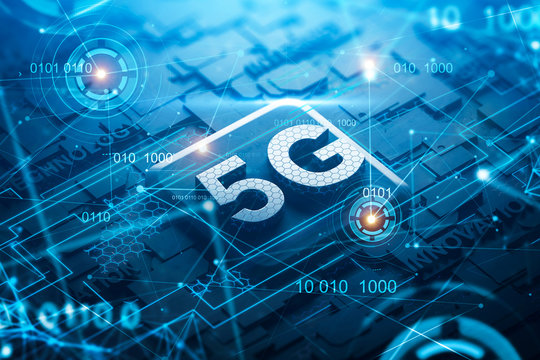Can I get cancer from 5G Wi-Fi?
You’ve likely heard from your great uncle’s best friend’s second cousin thrice-removed that 5G is causing cancer rates to skyrocket. Since you’re reading this, it’s also likely that you don’t take such claims too seriously.
But how to explain to your great-uncle that 5G isn’t causing cancer? Let’s dive into the topic!
What is 5G Wi-Fi?
What is 5G for wi-fi? Well, it’s actually 5 GHz, which is a measure of frequency. The 5GHz frequency refers to a range of radio frequencies used by electronic devices to communicate.
5G itself refers to the 5th generation of cellular standards. We’ve put together an article about 5G cellular standards and 5GHz Wi-Fi that goes into more detail about this.
5GHz Wi-Fi is a set of rules that devices follow so they can talk to each other with waves in the electromagnetic fields around us. Earlier Wi-Fi devices mostly dealt with frequencies that were in the 2.4GHz range. As more people started using Wi-Fi devices, networks had problems with all the traffic in that narrow range. Digital device makers began to use the next band of frequency that Wi-Fi dealt with; this was the beginning of 5GHz Wi-Fi.
What devices use the 5GHz frequency?
Before the majority of Wi-Fi devices started to use 5GHz there were several devices that used the same frequency. Among these were cordless phones and satellite tv. Now several devices that operate with Wi-Fi rules use the 5GHz frequency bandwidth.
Printers, smartphones, and laptops can use the 5GHz frequency to communicate using Wi-Fi. As more devices are connected to Wi-Fi networks, we can expect to see more kinds of devices using the 5GHz frequency to talk to each other.
Does 5G Wi-Fi cause cancer?
So, with all this said, does Wi-Fi cause cancer?
Technically, no, because Wi-Fi is the set of rules that devices use to manage the electromagnetic waves they talk with. Rules, of course, don’t cause anything.
But what about the electromagnetic waves themselves? Can they cause cancer?
Well, the frequency of the waves classifies them as microwaves, similar to the microwaves in the microwave oven many of us use in our kitchens. But before you freak out, it’s important to talk about the power of microwaves.
Microwaves carry enough power to spin and vibrate molecules, but not enough to break the chemical bonds between these molecules. This is important because developing cancer requires chemical bonds to be broken in the DNA of cells. The next, more powerful group of waves are those of visible light and these waves are not strong enough to cause cancer either. It takes ultraviolet-range waves to start breaking electron bonds, and that is the stuff of sunlight and tanning beds.
To make this more relatable, remember that cordless phones and satellite TV use the same range of waves as 5GHz frequency Wi-Fi devices. If you think that cordless phones and satellite TV cause cancer, then it would make sense to be concerned about the Wi-Fi we are using.
Are Microwaves and Wi-Fi Safe?
The Institute of Electrical and Electronics Engineers (IEEE), the International Electrotechnical Commission (IEC), and several countries have tested microwave safety. They found the limit of microwave power that a person can be exposed to is 50 watts per square meter at any point 5 centimeters from the emission point. 5 centimeters is about 2 inches, and as you go further away the power of microwaves drops dramatically.
To put this into perspective, visible light has more power than microwaves. To compare the power of the sun (with visible AND ultraviolet light) to a Wi-Fi router, simply stare at your Wi-Fi router for five minutes. Then, imagine what would happen if you spent the same amount of time looking at the sun.
All of this is summarized by saying: suntanning is more likely to give you cancer than Wi-Fi routers. And considering that an entire generation used cordless phones and didn’t develop brain cancer in mass, it’s very likely the concern about 5GHz frequency Wi-Fi is a distraction from other, well-known causes of cancer.
We hope that this helps you better understand what 5Ghz Wi-Fi is and is useful in relieving any concerns that your friends and family may have. If you have further questions about this topic, be sure to check out the references listed below.
References:
Wi-Fi – Wikipedia
Cordless phone frequencies – The Silicon Underground (dfarq.homeip.net)
Electromagnetic spectrum – Wikipedia
Radiation: Microwave ovens (who.int)

